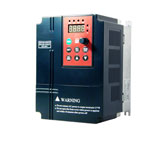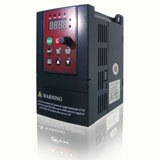HFCM current on variable frequency drive
In terms of damping of HF CM current (and lowering of dv/dt spikes), it may also be noteworthy to highlight Yaskawa's use of 3-level-inverter and matrix-drive topologies. The former 3-level-inverter topology has long been used by Yaskawa in its low voltage drives whereas LV VFD drives generally use 2-level-inverter topologies; the latter matrix-drive topology has recently been commercialized by Yaskawa. Both drive topologies are also used in Yaskawa (and 3-level topology inverters are commonly used by other VFD manufacturers in) medium voltage drive applications. These topologies would appear to be especially relevant as high performance considerations with inverter carrier frequencies of 10 to 15 kHz become common.
Delving a bit more in an attempt to dispel lingering reservations regarding responses, including mine, so far, I can find no more comprehensive and succinct an inventory and review of mitigation techniques to different bearing current types than the one that Ville Sarkimaki provides. These mitigation techniques comprise shaft grounding brush install, insulated bearings or ceramic rollers, proper grounding and cabling system, insulated coupling install, Faraday shielded motor design, carrier frequency reduction, common-mode modulation techniques, conductive shielding in motor slots, and exploiting relative merits of the two drive front-end types (current- vs. voltage- source).
Although insulated bearings and/or ground brush install are often proposed, there is no one best solution to mitigate bearing currents and mitigation techniques are generally associated with additional costs. Sarkimaki asserts (see pp. 30-34 incl.) that:
- the shaft ground brush install technique works well in EDM current & circulating current cases provided low impedance connection is maintained but may make problem worse for rotor current case
- the proper grounding and cabling system technique does not work for EDM current case, has no influence or may be worse for circulating current case, and works well for rotor current case.
With all these variables in play, ensuring that countermeasures adopted are verified by measurement at type test level for effectiveness.
Delving a bit more in an attempt to dispel lingering reservations regarding responses, including mine, so far, I can find no more comprehensive and succinct an inventory and review of mitigation techniques to different bearing current types than the one that Ville Sarkimaki provides. These mitigation techniques comprise shaft grounding brush install, insulated bearings or ceramic rollers, proper grounding and cabling system, insulated coupling install, Faraday shielded motor design, carrier frequency reduction, common-mode modulation techniques, conductive shielding in motor slots, and exploiting relative merits of the two drive front-end types (current- vs. voltage- source).
Although insulated bearings and/or ground brush install are often proposed, there is no one best solution to mitigate bearing currents and mitigation techniques are generally associated with additional costs. Sarkimaki asserts (see pp. 30-34 incl.) that:
- the shaft ground brush install technique works well in EDM current & circulating current cases provided low impedance connection is maintained but may make problem worse for rotor current case
- the proper grounding and cabling system technique does not work for EDM current case, has no influence or may be worse for circulating current case, and works well for rotor current case.
With all these variables in play, ensuring that countermeasures adopted are verified by measurement at type test level for effectiveness.



